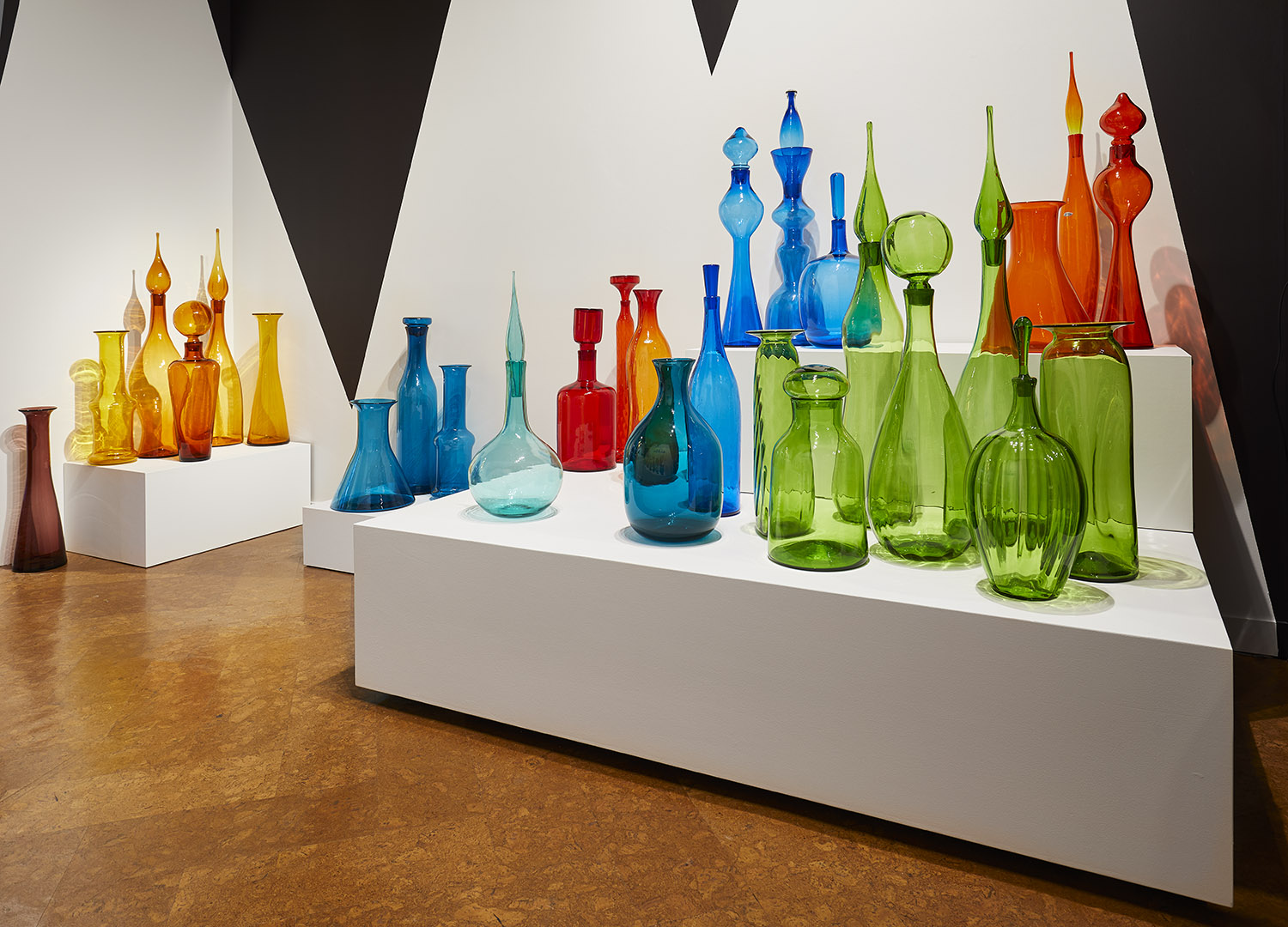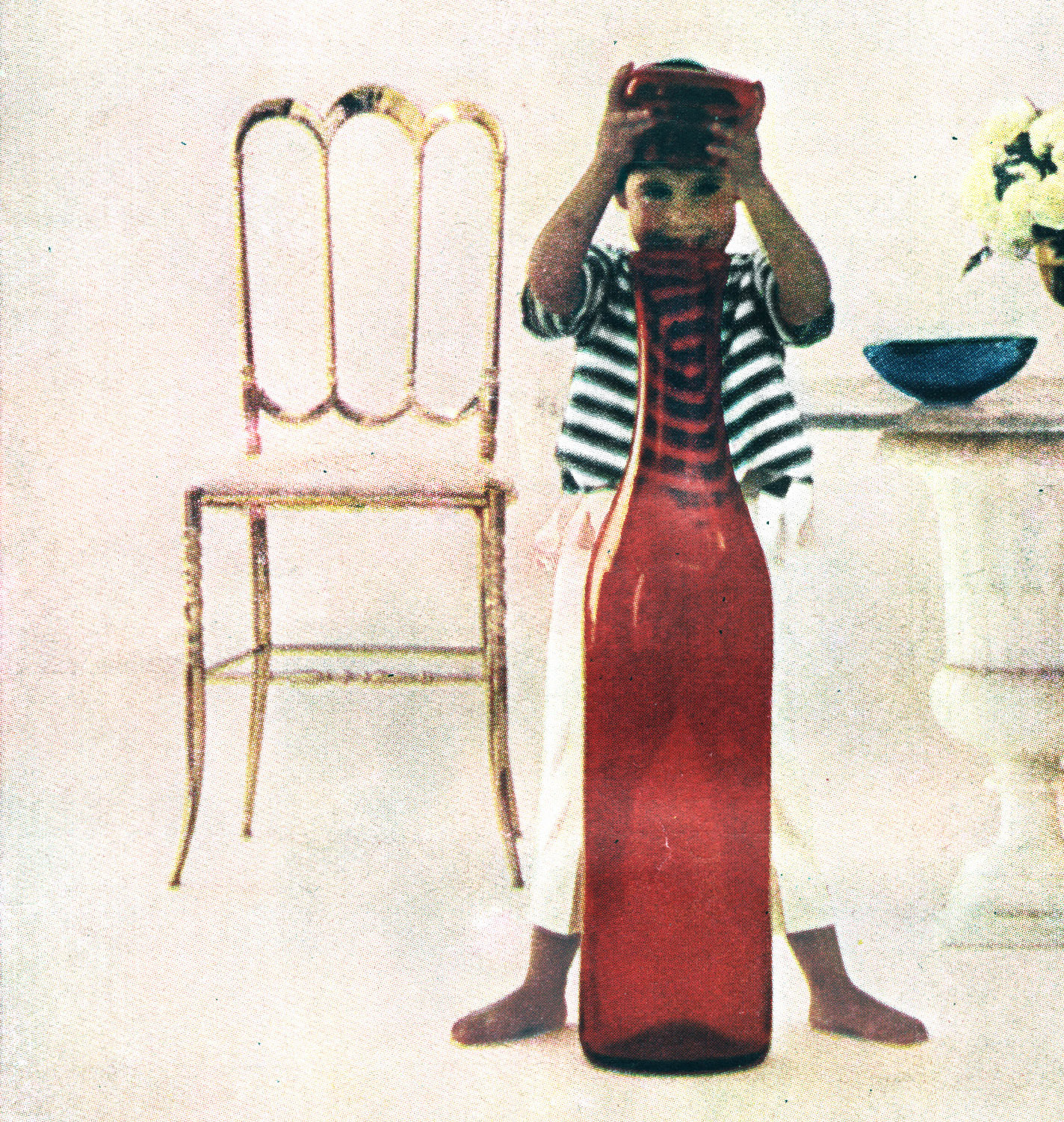GIANTS: The Origin of BIG in Studio Glass
| Nov 9, 2023 - Jan 27, 2024 |
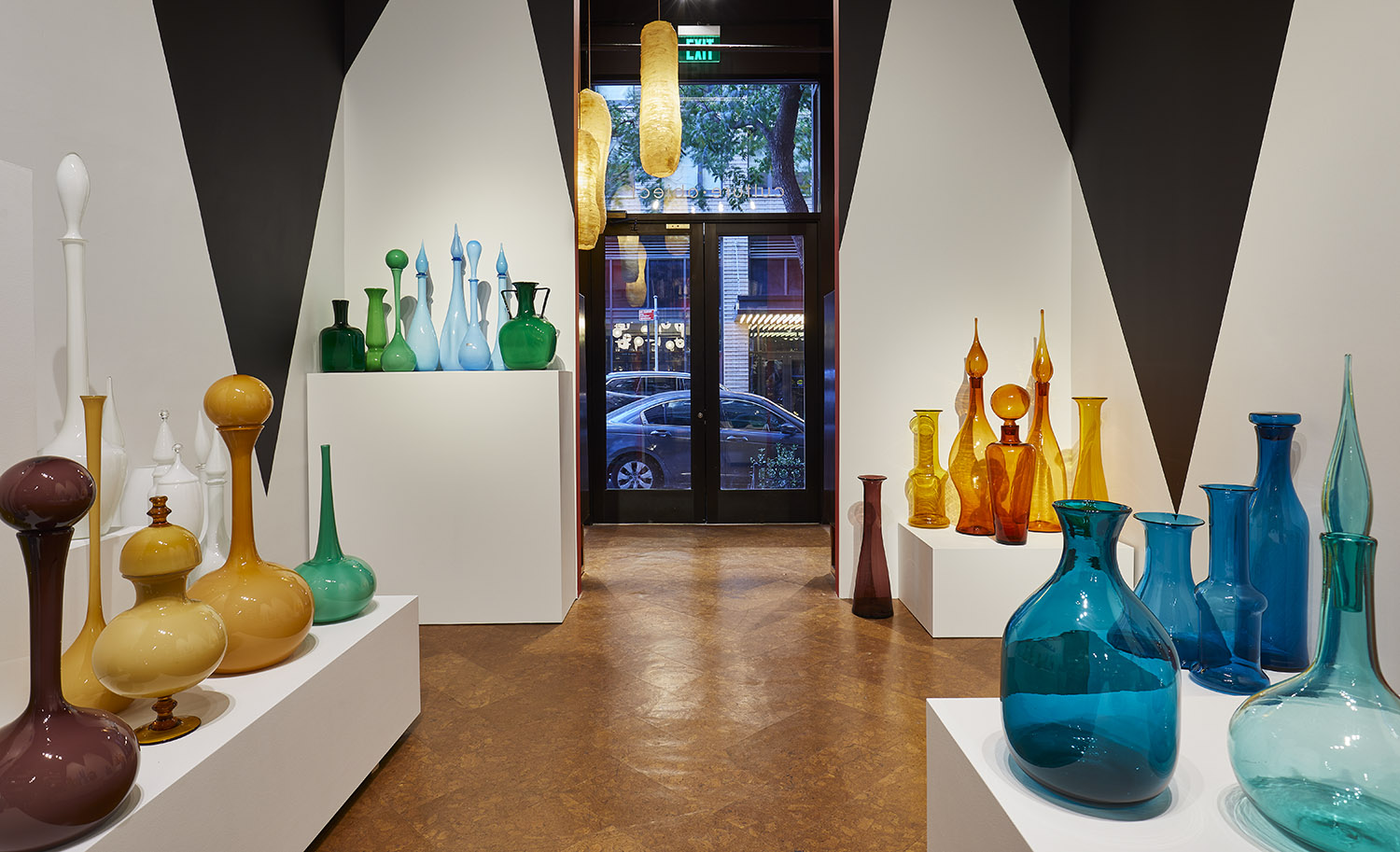
The studio glass movement is a story of the unbinding of a material from the limitations of expectation. After WWII, a generation of artists pushed the boundaries of technical possibility by extending a familiar material beyond its standard roles and manifestations, and in doing so asserted freshly compelling advocacy for the cultural potential of glass as art. The most powerful strategy leveraged to these ends was of creating objects of dramatically enlarged scale. From Dale Chihuly’s Seaforms and William Morris’ Standing stones of 1982, to Dante Marioni’s Whoppers of 1987, large-scale blown glass works found prominent place in studio glass. That much of the story is well documented, what is not is that this approach grew from influential historical antecedents. In the mid-20th century, designers and artisans in Italy and America capitalized on the potential to transform quotidian glass forms into spectacular sculptural objects, simply by blowing them up. |
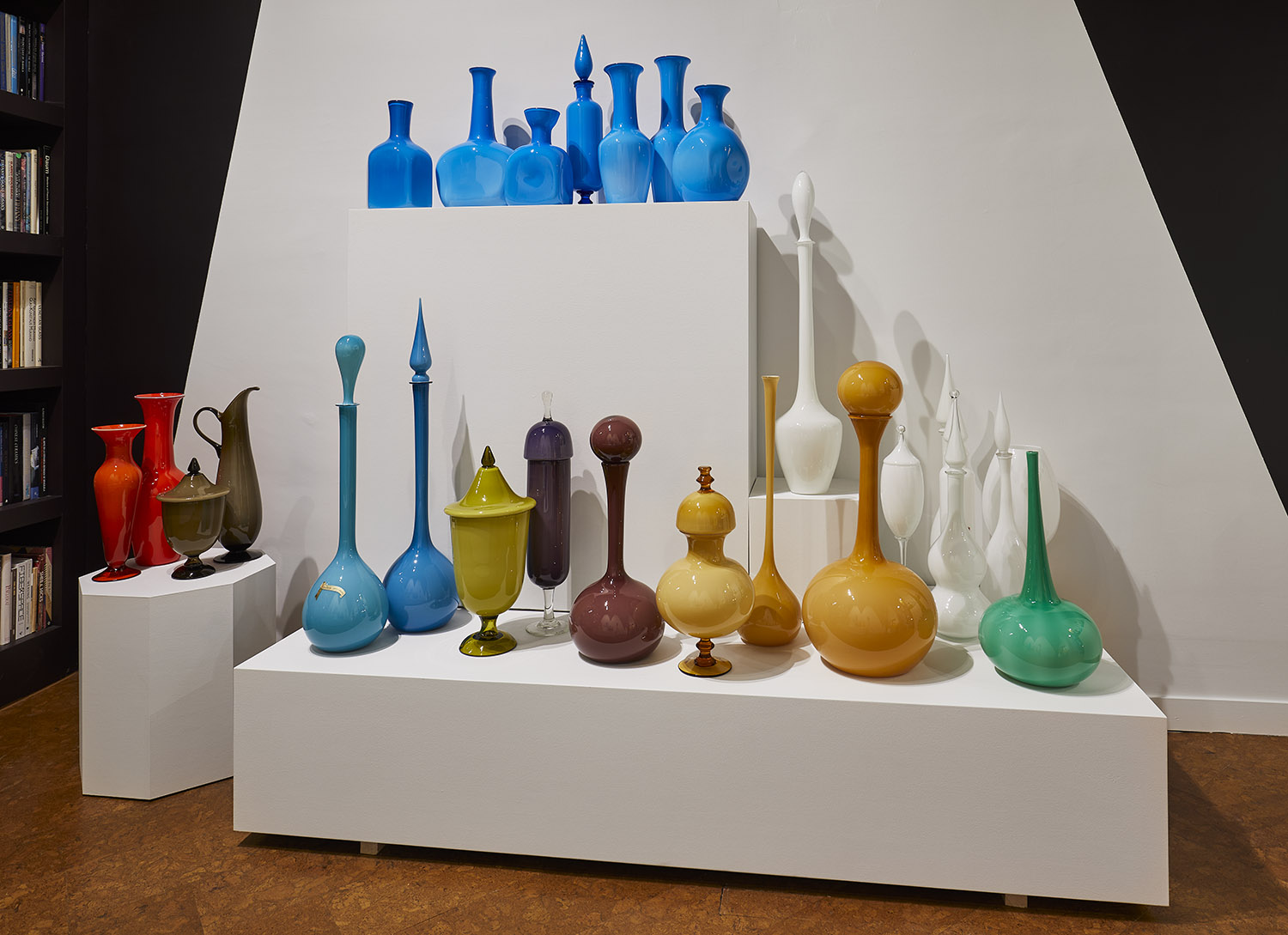
The glass in this exhibition originates from two distant, and improbably related locations, Tuscany and West Virginia - with the former inspiring the latter. In the Tuscan town of Empoli, the glass industry dates to the 13th century, producing utilitarian storage vessels for the agricultural industry. In 1926 an intrepid American importer introduced Murano glass blowers to the native Empoli blowers, and in so doing he spawned a new artistic glass tradition. The results of this pairing were surprisingly successful, though certainly not as anticipated. Despite the importer’s efforts, no Murano-style glass resulted, but the exercise unleashed the creativity of the Empoli blowers. Accustomed to producing simple, large forms like massive demijohns, their focus turned to creative and aestheticized versions of the forms to which they were already predisposed. An entirely new style developed for simple, modern decorative vessels, and it found a sympathetic home in the American market. For several decades, interrupted by WWII, Empoli glass enjoyed a period of strong commercial success, with several glasshouses producing distinctive and large decorative vessels that were widely distributed in America and priced for a broad market |
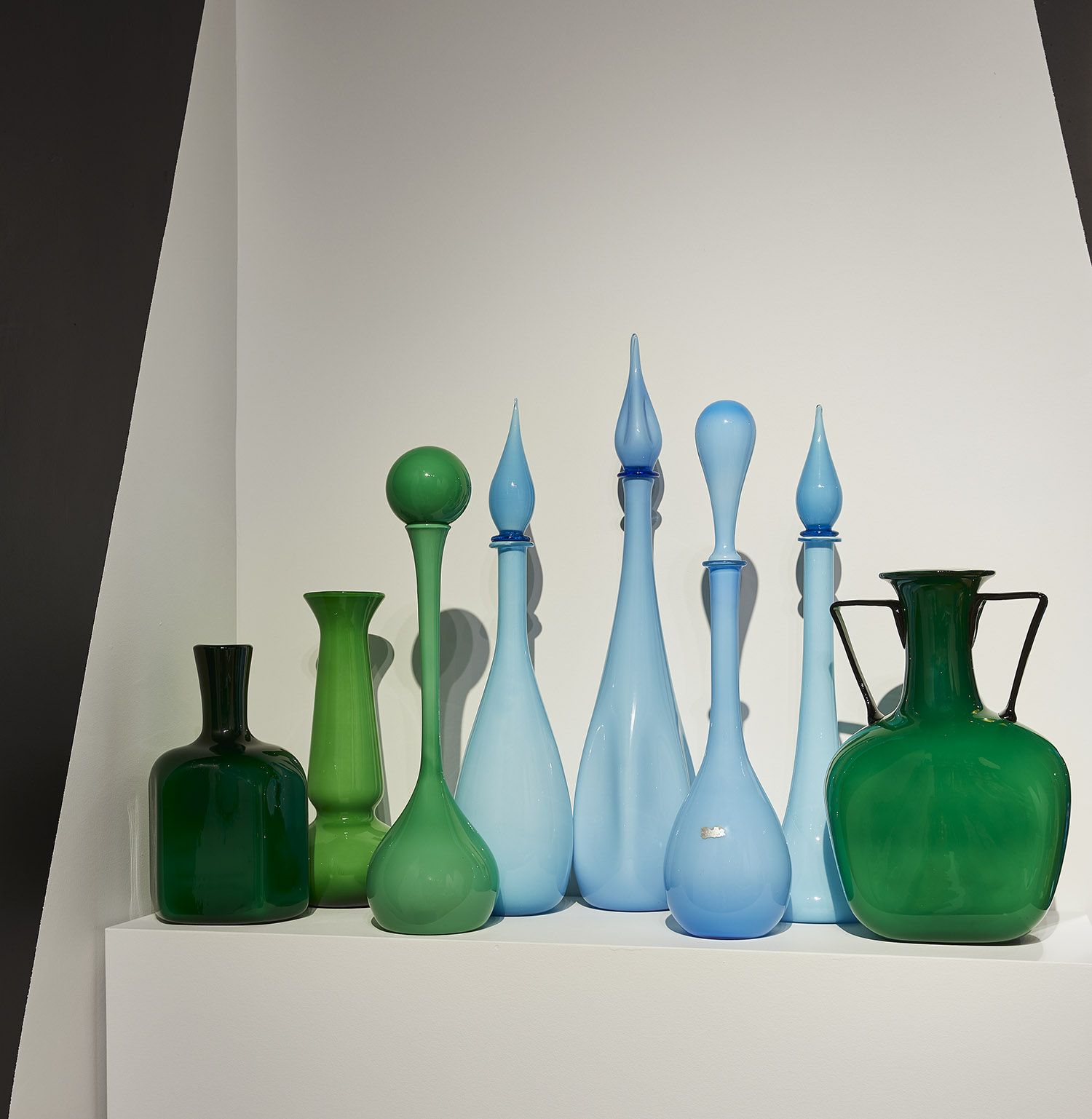
The American home décor industry took note of this success, and one New York sales representative in particular, Ed Rubell, took to fostering this style stateside by encouraging the established but struggling Blenko Glass factory in West Virginia to produce competitive work. A twenty year period of tenuous development ensued, then became suddenly energized by the decision to hire a resident design director with complete creative freedom. The first designer, Winslow Anderson redirected the company towards sophisticated modern design, to great acclaim. Emboldened by this initial success, in 1954 the company hired Wayne Husted, a fresh graduate of Alfred University’s renowned ceramics program, as its second designer. Wayne’s profound contribution to this story is his introduction of the massive “Architectural Scale” genre of glass shown in this exhibition. The comprehensive story of this range is recounted in the book “BIG COLOR”: "An artist at heart and in training, the defining theme of Husted's tenure at Blenko was his unspoken drive to create objects that could only be seen as works of art. …By altering scale to an extreme and unprecedented degree he struck on an enduring and compelling new genre that suited the modern era, one that unequivocally demands to be considered as sculpture. Architectural decanters and vases ceased to be mere decanters and vases; they are monuments to decanters and vases, sculptures in dialogue with architecture." The exceptional series was produced between 1954 and 1974, numbering 43 original designs in total. Their common trait is being of a scale substantial enough, 24 to 46 inches tall, to engage directly with the architectural environment and its elements, such as columns and stairs, unmediated by furniture. Wayne’s successor, Joel Phillip Myers, continued the tradition by contributing fourteen designs to the series before leaving Blenko in 1971 to become an influential early professor of studio glass at Illinois State University. The bold color and large scale of Joel’s subsequent studio glass work betrays the influence of his formative years at Blenko, demonstrating the dissemination of the big idea that this exhibition documents. With the simple idea of BIG, Empoli and Blenko primed the American audience for sculptural glass objects for the home. - Damon Crain |
